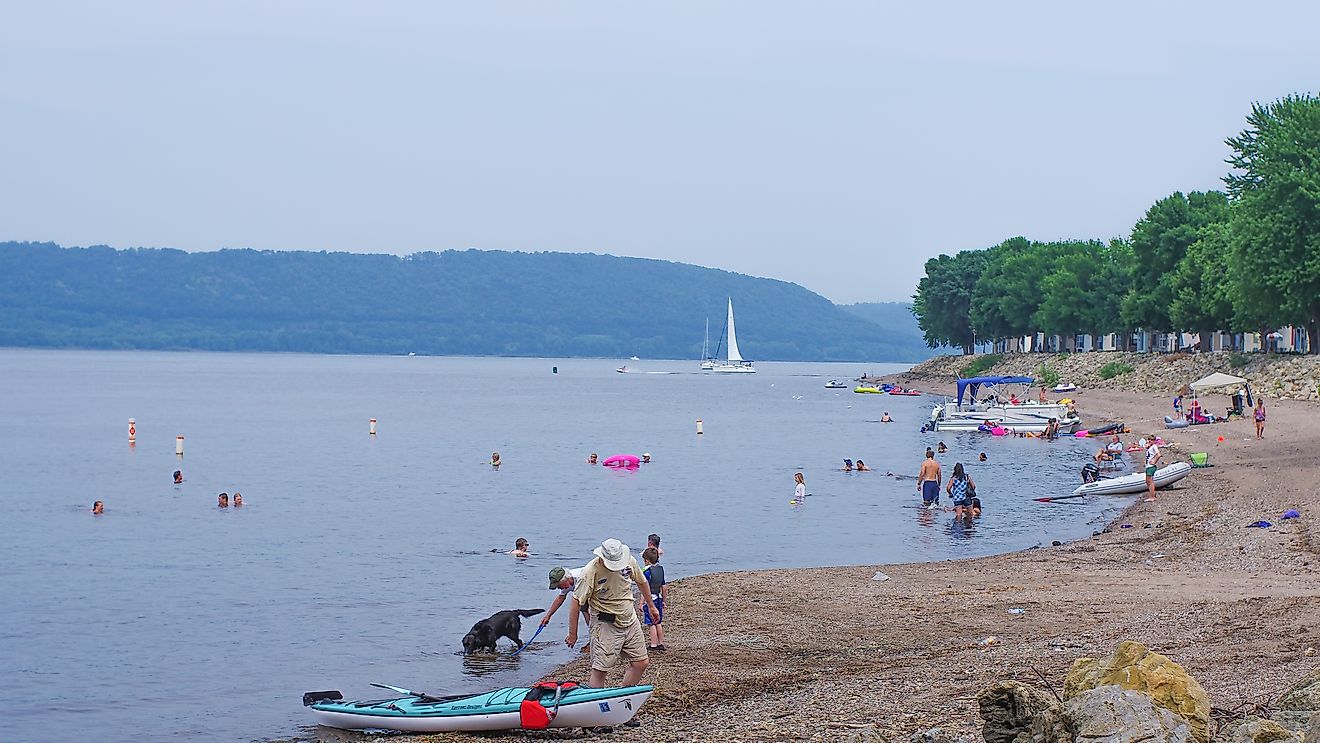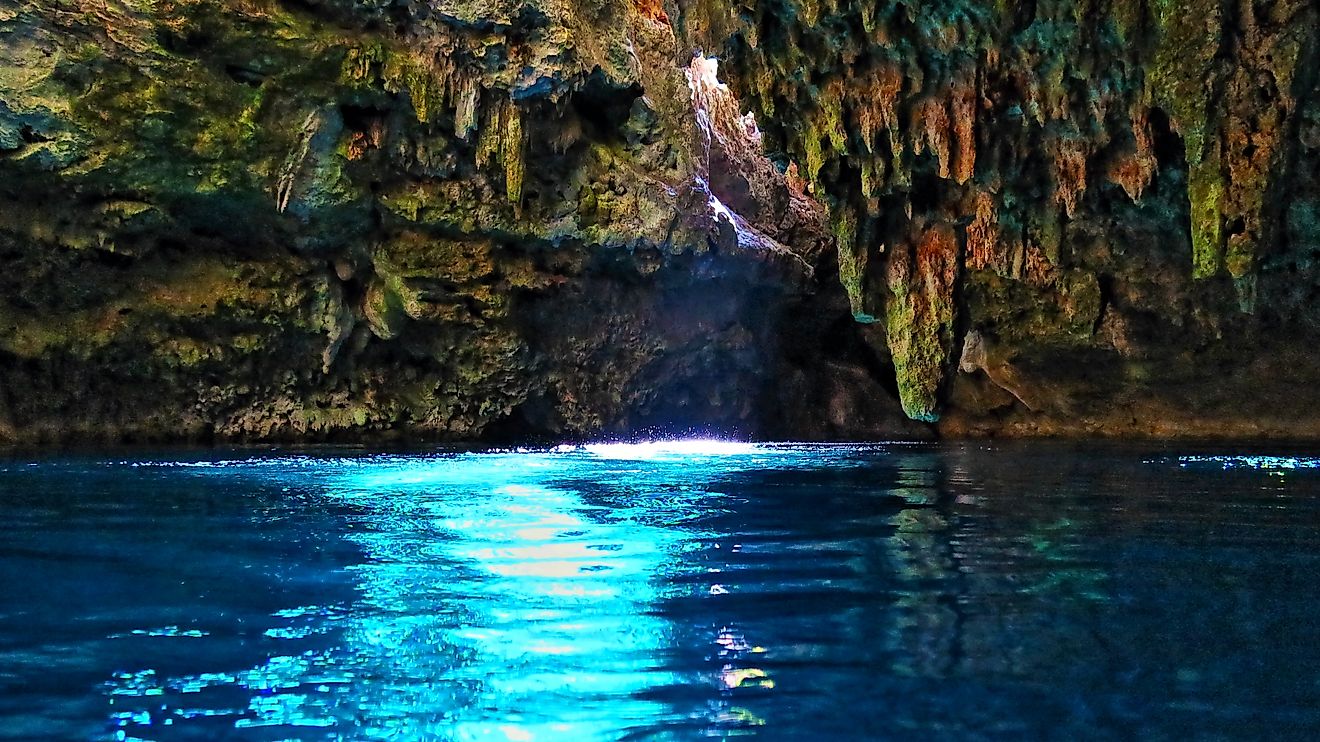
Douro River
Portugal is a popular destination among international travelers, alluring tourists to its vibrant cities of Lisbon and Porto. Besides its scrumptious pastries and historic attractions, the Douro River is a prominent icon affiliated with the country. Spanning several hundred miles, the Douro River, flowing through Spain and Portugal, has been teeming with human activity for millennia, supporting agricultural activities and culture, particularly related to wine-making.
Where Is The Douro River?

The Douro River goes by several names, including the Durius River, Río Duero, and Rio Douro. The river has its source near the Duruelo de la Sierra municipality of Spain. From there, it flows south and then west into northern Portugal to empty into the Atlantic Ocean at the Portuguese city of Porto. This long river can be admired from several viewpoints, particularly in the São Leonardo da Galafura, the Quinta do Noval, the Casal de Loivos, the São Salvador do Mundo, and the Quinta do Vale Meão.
Geography Of The Douro River

The Douro River is the third-longest river in the Iberian Peninsula, with a length of 475 miles. The Douro River's main tributaries include the Varosa, Corgo, Távora, and Pinhão. These tributaries flow through a mountainous landscape containing over 24,600 hectares of steep, sloped grape vineyards. The tributaries have also carved out networks of twisting valleys, occasionally forming narrow gorges. The soils in this area primarily consist of shale, a variety of metamorphic rock.
Along the Douro River exists different geographic points of interest besides the Douro Valley, such as Porto, Portugal's second-largest city and a historical destination. The Douro River is also studded with other urban centers and landmarks, including religious architecture like Mateus Palace and Tabuaço. In proximity lies the Douro International Natural Park.
The History Of The Douro River

In present times, the Douro Valley relies on grapes as its primary crop, while the Douro estuary is the core of Portugal's wine industry. Historically, the Douro Wine region is one of the world's oldest demarcated wine regions. The Romans made wines along the banks of the Douro River during their Iberian Peninsula occupation. During the 12th century, the country became an international and vital exporter of wine following the establishment of the Kingdom of Portugal.
In 1386, the Treaty of Windsor between England and Portugal ensured a strong trading relationship between the two nations, particularly regarding wine. Transportation and export of wine were largely made possible due to water travel along the Douro River, an activity that continued for several centuries. The Douro River served as a main route of transportation due to the shortage of safe land routes. Moreover, through the 18th and 19th centuries, flat-bottomed river boats known as barcos rabelos were constructed to carry heavy loads of wine (particularly the port variety) while traveling along the Douro River. Other than wine, other commercial products like textiles, metals, chemicals, fruit, olive oil, cereals, brandy, and vinegar were also transported along the river.
Historically, due to its unnavigable nature, the river harbored an infamous reputation as a dangerous water body to travel through. This reputation may have been due to the river's silting, rapids, and deep (yet narrow) gorges. Thus, the Portugese-made barcos rabelos were constructed to withstand the journey and wine transport along the river, especially due to its flat-bottom, long steering oars, and broad sails.

However, between 1972 to 1985, five dams were constructed to control the river's flow. All dams were built in Portugal and included Carrapatelo, Bagaúste, Valeira, Pocinho, and Crestuma-Lever. These dams are constructed from the Foz do Porto to Barca d'Alva. These dams make water navigation around the Douro River safer than in the past.
Since the 1930s, the Douro River's power has been used for hydroelectricity and irrigation. As such, several hydroelectric power plants are installed along the Douro River.
Douro River's Popular Attractions
The Douro River is long and expansive, so it's not surprising that it contains attractions that are popular among travelers. Explore the beauty of this European river while discovering some iconic (and historic) landmarks along the way.
Luís I Bridge

Also known as the Dom Luís I Bridge, the Luís I Bridge crosses the Douro River in Porto. It opened in 1886 and existed as the world's largest arch bridge until 1898. Spanning 591 feet, this famous bridge was designed by a student of Gustave Eiffel, the French civil engineer who designed the Eiffel Tower. Over 100 years later, the bridge is still fully functional as a road bridge, carrying the Metro do Porto tram on its upper deck, with vehicle traffic on the lower portion.
Parque Natural Do Douro Internacional

Also known as the Douro Internacional Nature Park, this natural attraction spans about 86,834 hectares, covering municipalities like the Mirando do Douro, Mogadouro, Freixo de Espada á Cinta, and the Figueira de Castelo Rodrigo. The park is noted for dramatic valleys, steep banks, and stunning ravines that support a variety of fauna and flora. The vegetation of the park largely consists of sweet acorn oak, prickly juniper, cork oak, and Pyrenean oak. Fauna like the Egyptian and griffon vultures can also be found at this nature park.
Alto Douro Region

The Alto Douro Region of Portugal is recognized as a UNESCO World Heritage Site, as it portrays the traditions of traditional European wine-making. For about 2,000 years, wine has been produced in this region. Specifically, Port wine has been Alto Douro's specialty variety, with its quality defined and regulated since 1756. Human activity has molded the landscape into the popular tourist destination it is today, world-renowned for its dramatic landscape, besides its production of high-quality port wine.
The Douro River is one of the largest rivers in Europe and is often affiliated with the country of Portugal. This expansive river supported human activity in the country for centuries, especially wine commercialization. However, it also remains a picturesque water body that successfully attracts thousands of tourists yearly.











